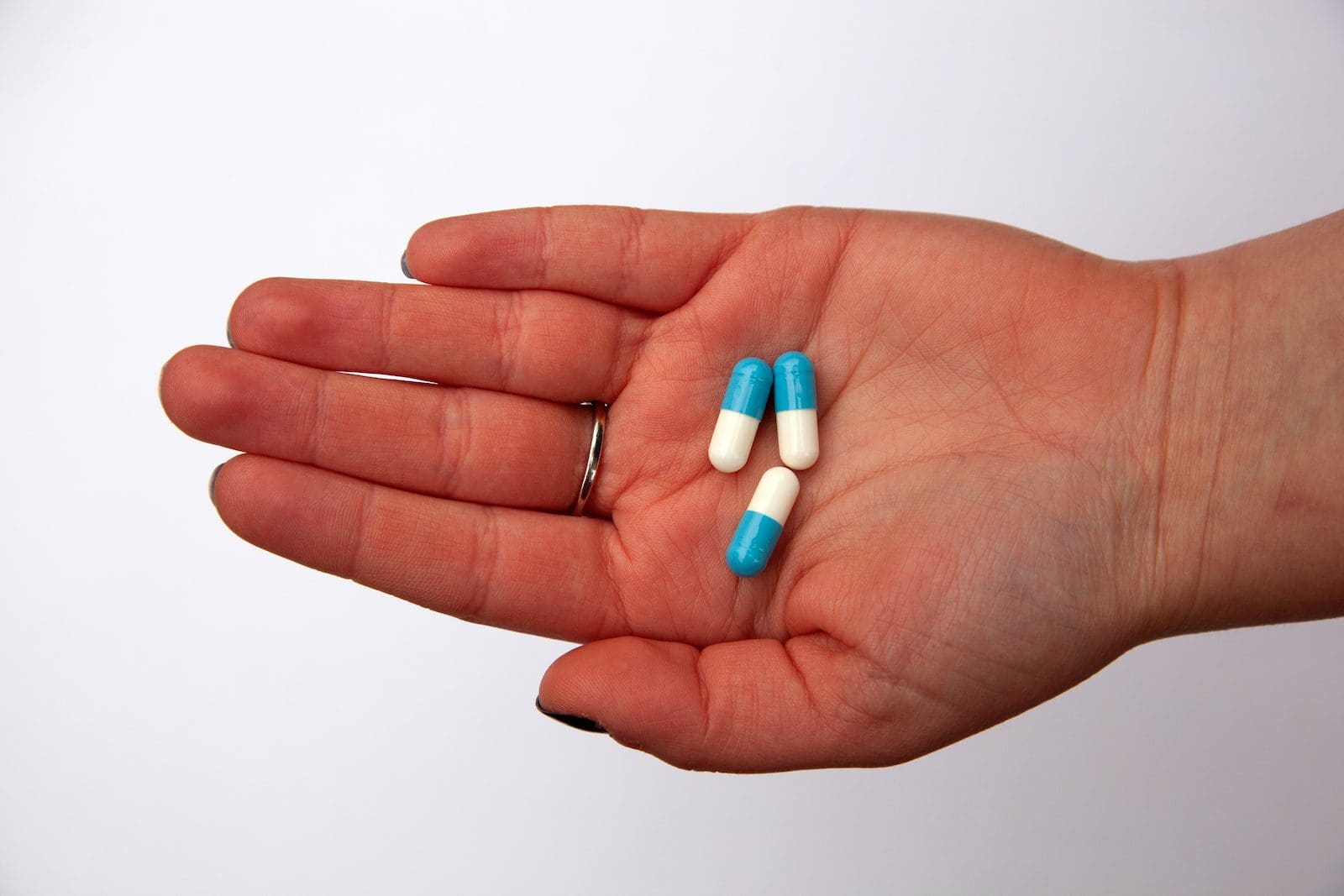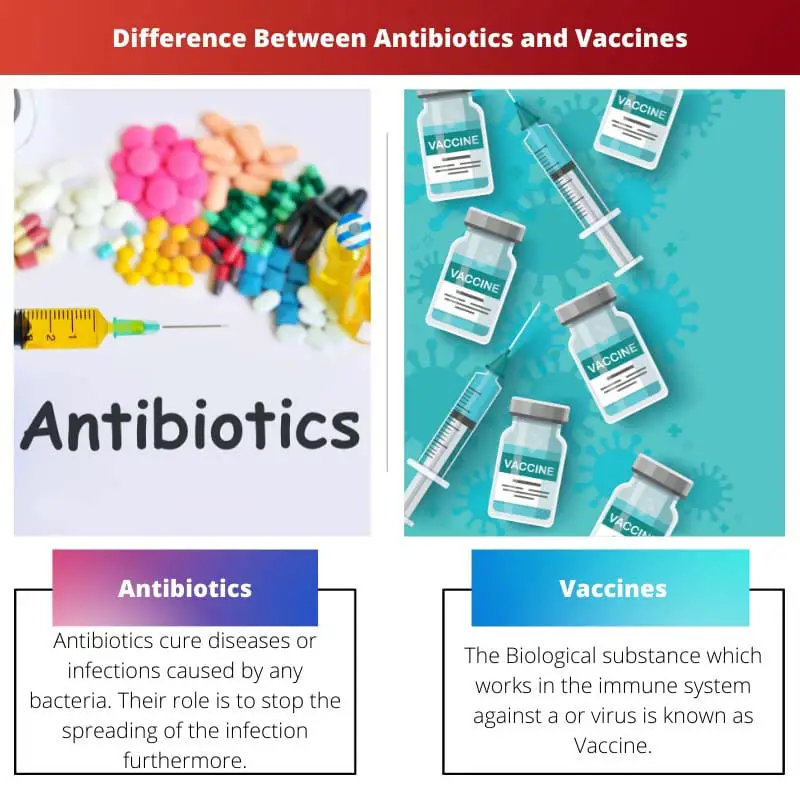Antibiotics and Vaccines both work simultaneously to cure diseases in Medical procedures. The production of Antibiotics and Vaccines is microbial processing, and it is beneficial in medical development.
Key Takeaways
- Antibiotics are medications that treat bacterial infections by killing bacteria or inhibiting their growth but are ineffective against viral infections.
- Vaccines are biological preparations that stimulate an immune response, providing immunity against specific infectious diseases caused by viruses primarily.
- Antibiotics address existing infections, whereas vaccines offer preventative protection and are critical in controlling the spread of infectious diseases.
Antibiotics vs Vaccines
Antibiotics are small molecules or compounds used to treat infections that have already occurred. They don’t work on viral illnesses. Vaccines are used to prevent diseases and viral illnesses. They are dead or inactivated organisms or compounds used to provide immunity to a particular infection or disease.

The medicines which help in curing infections caused by any bacteria are known antibiotics. Their role in living bodies is to stop the spreading of the infection.
Vaccines help the immune system to create specialized, Y-shaped proteins called antibodies, which build immunity in the body to fight the virus.
Comparison Table
| Parameters of Comparison | Antibiotics | Vaccine |
|---|---|---|
| Definition/ Function | Antibiotics cure diseases or infections caused by any bacteria. Their role is to stop the spreading of the infection furthermore. | The Biological substance which works in the immune system against a or virus is known as Vaccine. |
| Classification | There are 2 types of antibiotics based on the action of antibiotics- bacteriostatic and bactericidal. | There are 5 types of vaccines- Vaccines made from Live viruses, Inactivated toxins, subunit and conjugate vaccine. |
| Terminology/ Origin of the Term | The term Antibiotics originates from Greek. ἀντι meaning “anti” and the word bio-tics comes from the word “βίος” meaning life. | The term comes from the Latin word “Vacca” meaning Cow. |
| Discovery | The first antibiotic was discovered by Alexander Fleming in 1928. | The first vaccine was discovered by Edward Jenner in 1796. |
| Source | Antibiotics are made from natural or synthetic substances. | Vaccines are made from the virus itself it is supposed to fight. |
What is Antibiotics?
Antibiotics help in stopping the growth and spreading of bacteria and treat bacterial infections.
The first effective antibiotic was discovered by Alexander Fleming, which was a case of an accident. Fleming has returned from a holiday, after which he noticed that one of his Petri-dish had mold growing.
Based on the action of Antibiotics, they can be differentiated into 2 types- bacteriostatic and bactericidal. The work of bacteriostatic antibiotics is to prevent the bacteria from multiplying.
Bactericidal antibiotics target killing the bacteria altogether. These antibiotics work on inhibiting cell wall synthesis. Bactericidal antibiotics, however can kill 99% of the bacteria or even more than that.

What is Vaccine?
The vaccine is a biological compound derived from the inactivated or dead viruses it is supposed to protect from.
Vaccines increase the body’s immunity when injected, as when the inactivated or dead virus is injected into the body, the immune system kills the virus and develops the strength and power to kill it anytime it enters the body.
The inactivated vaccine is made from inactivated virus whose ability to multiply is destroyed and is put into the vaccine so that the immune system can recognize it.
Toxoid Vaccines are made from the toxic substance extracted from the virus, which causes the disease so that the immune system can create antibodies to the toxic parts of the virus.
A combination of weak and strong antigens is incorporated into the conjugate vaccine for the immune system to respond to the virus.

Main Differences Between Antibiotics and Vaccine
- The main difference between Antibiotics and Vaccines is that antibiotics do not contain the bacteria they are supposed to fight, But in the case of vaccines, they contain the virus in a weaker form.
- Some examples of antibiotics are – Penicillins, Cephalosporins, Tetracyclines, and some of the examples of vaccines.

- https://journals.asm.org/doi/full/10.1128/CDLI.6.6.832-837.1999
- https://www.sciencedirect.com/science/article/pii/S0032579119473045

Antibiotics and vaccines are crucial in modern medicine to combat infectious diseases and their respective treatment and prevention strategies.
The scientific nuances elucidated in the article distinguish the distinct roles and classifications of antibiotics and vaccines, fostering a comprehensive grasp of their functionalities.
The article offers an insightful perspective on antibiotics and vaccines, paving the way for in-depth understanding of their medical relevance and benefits.
The informative content of antibiotics and vaccines and their scientific implications unfolds the essential contribution these medical developments have established in healthcare systems.
The comparison between antibiotics and vaccines put forth in this article clearly delineates their roles, functions, and significance within the context of medical advances.
The detailed information presented here effectively conveys the unique importance of antibiotics and vaccines in combating diseases and promoting public health.
The historical background on the discovery of antibiotics and vaccines underlines the remarkable scientific breakthroughs that have revolutionized medical treatment and disease prevention.
The sophisticated comparison table highlights the stark differences and functions of antibiotics and vaccines, contributing to a deeper understanding of these medical agents.
The intricate details about how antibiotics and vaccines operate to address infections and provide immunity are an excellent insight for individuals keen on comprehending their medical properties.
The crystallized differences between antibiotics and vaccines are effectively highlighted, enriching the reader’s knowledge with a sophisticated understanding of their mechanisms.